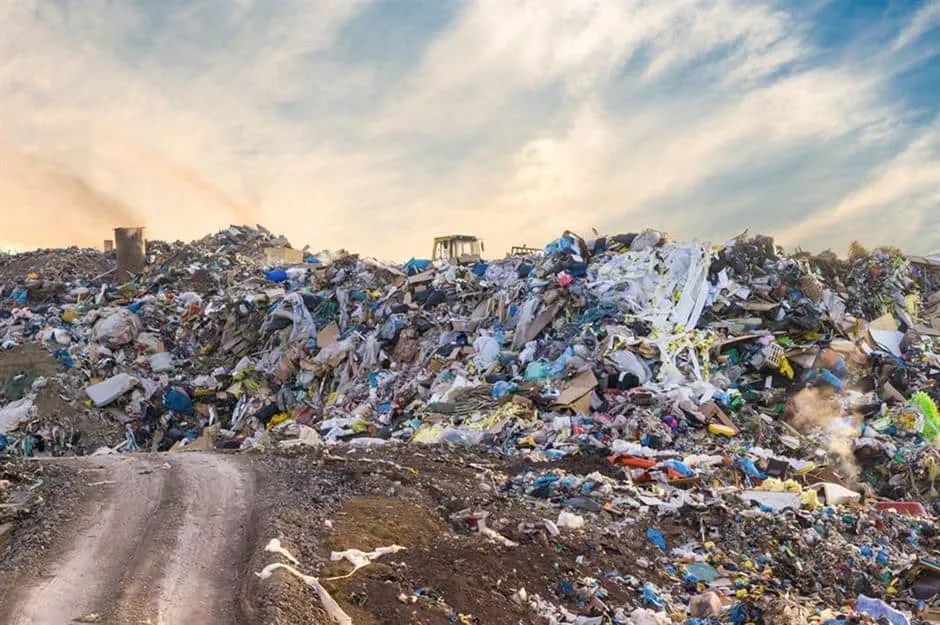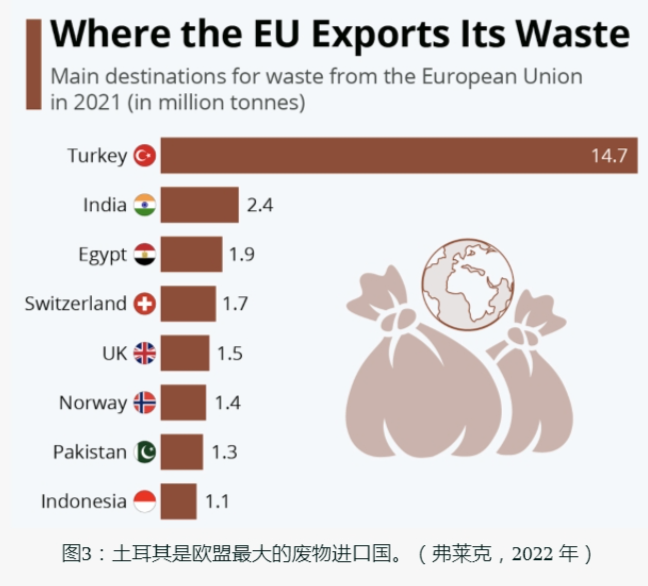The goal of zero waste in Europe is failing, with 30 million tons of garbage rushing to Asia every year, and Turkey and India become the
The European Commission warned that 18 EU member states may not achieve their goal of waste reduction and near-zero waste, that is, 55% of urban waste and 65% of packaging waste will be reused or recycled by 2025, and the landfill rate of urban waste will be reduced to below 10% by 2035.

At the current rate, Estonia, Finland, France, Ireland, Latvia, Portugal, Spain and Sweden are not expected to meet the targets of urban waste, while Bulgaria, Croatia, Cyprus, Greece, Hungary, Lithuania, Malta, Poland, Romania and Slovakia are afraid that they will not meet the targets of urban waste and overall packaging waste.
According to the European Association of Plastic Recyclers, the growth rate of installed plastic recycling capacity in Europe decreased by 7% year-on-year, reaching 12.5 million tons by 2022. Generally speaking, after the twentieth year of the 21st century, the municipal waste produced by the European Union increased by 14% compared with the 1990s. According to the calculation of Eurostat, in 2022, the per capita urban garbage output in the EU was 513 kg, 46 kg more than that in 1995, and the per capita recycling was 249 kg, 15 kg less than that three years ago. This shows that the zero-abandonment and related environmental NGOs, which were rampant in Europe, have slipped to the brink of bankruptcy and failure.
Although the EU has produced more garbage, landfill has decreased. In 2020, the total amount of municipal solid waste landfill will drop from 121 million tons in 1995 to 52 million tons per year at present, which is equivalent to an average annual decline of 4%. This does not mean that the EU's garbage recycling efficiency has improved, because European garbage has been exported to the East in large quantities. According to statistics, in 2021, the EU exported 33 million tons of garbage to non-EU countries, an increase of 77% since 2004.

Especially in Asia and the Middle East, which is close to Europe, the increase is the largest. Turkey is the EU's largest waste export destination. In 2021, it received about 14.7 million tons of European waste, more than three times that of 2004, accounting for almost half of the total waste export. It has become a European landfill recognized by the mainstream media in Europe. 69% of the garbage is directly buried, which is equivalent to burying 10 million tons of garbage from Europe every year. The landfill is also full of explosions.
There are also Egypt (1.9 million tons), Pakistan (1.3 million tons) and Morocco (600,000 tons), all of which are the main Middle East exporters of EU garbage. The garbage export in the Far East is also growing. India is the second largest destination of EU garbage export. In 2021, it received nearly 2.4 million tons of garbage from the EU, and Pakistan also received a large amount of EU garbage, with its quantity increasing from 100,000 tons in 2004 to 1.3 million tons in 2021. In sharp contrast, in 2018, China decisively banned the import of foreign garbage, and the EU's garbage exports to China fell precipitously, from the peak of 10.1 million tons in 2009 to 400,000 tons in 2021.
In terms of plastic waste, the Far East is the main destination of plastic waste in the EU, and India, Indonesia, Malaysia, China, Taiwan Province, Thailand, Turkey and Viet Nam have become the fastest growing countries to accept the export of plastic waste from the EU after 2018. In addition to becoming a major garbage importer in the EU, India's own garbage is also growing rapidly. According to the Annual Report on Solid Waste Management (2020-21) issued by Delhi Central Pollution Control Committee, the total amount of solid waste produced in India is 160,000 tons every day. Among them, only nearly 30 thousand tons were landfilled, and the rest could not be counted for their true whereabouts. It is estimated that by 2031, Indian cities will produce 107.01 million tons of garbage every year, and by 2041, it will produce 160.96 million tons. In the past forty years, the amount of garbage in India has increased by about five times. The management of municipal solid waste in India has evolved into a severe challenge.
